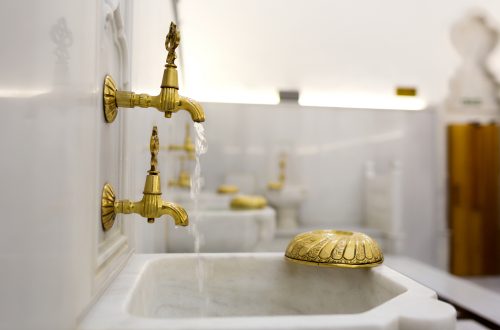
Kapali Carsi, The Grand Bazaar
Kapali Carsi, The Grand Bazaar, Scents and Colours of Istanbul.
Today I want to escort you to one of the most evocative places in Istanbul in my opinion, if not Turkey. It is the Grand Bazaar (Kapali Carsi). A mysterious, enchanting place, filled with scents and colours, the Grand Bazaar is undoubtedly worth a visit. When I say visit, I would like to point out that it is almost impossible to get in and out within a couple of hours.
It has the magical power of attraction to all who enter. arsirepresents the centuries-old tradition of trade, which in Istanbul, has always been lively and intense.
Why Istanbul?
Why in Istanbul and nowhere else? Istanbul straddles two continents and has always been a crossroads of cultures, peoples and languages. First Byzantium, then the great Constantinople, to then become Istanbul, the jewel of the Sultans. And it is precisely this multiculturalism that makes this megalopolis a unique commercial mecca.
Before entering the Grand Bazaar (Kapali Carsi) in Istanbul
Before entering the Grand Bazaar or Kapali Carsi (i.e., covered market), we need to understand a bit more. For those visiting Istanbul for the first time, I recommend getting a good guide to the city on amazon.
Kapali Carsi is located in Beyazit, the heart of Istanbul, within walking distance of Hagia Sophia and the Blue Mosque. It is an historical site, first of all, since it dates back to the 15th century. This was the period in which Sultan Mehmet II had this covered market built in place of an old market. Afterwards, the Kapali Carsiwas widely enlarged by Suleiman the Magnificent.
Kapali Carsi, a labyrinth of streets
Kapalı Ҫarşı has about 60 internal streets and almost 20 access gates (Beyazit, Kuyumcu …….) containing more than 3000 shops. It is, in simple terms, the largest shopping mall in the world.
I would also add that in recent years, Istanbul has seen dozens and dozens of ultra-modern shopping centres flourish, magnificent enough to leave you speechless, but what the Kapalı Ҫarşı offers you will remain an unforgettable experience.
The dimensions of the Kapalı Ҫarşı require optimal organisation, but at first glance, the visitor will feel as if he has entered into an infinite labyrinth.
Each craft has its own “neighbourhood”, which often gives the street its name. So we have streets that are called “aynacılar” (pertaining to mirrors), iplikciler (related to thread), kilitçiler (the locksmiths), altuncular (those related to gold), terziler (the tailors) or yorgancılar (street of the blankets/duvets ).
They are descriptive names, which often give a fairly good idea of what will be sold on that particular street.
What we find in the Grand Bazaar (Kapali Carsi)
It is now clear that we should visit, to be included in the must do list of things to see and do in Istanbul. But what products shall we find at the Grand Bazaar? For me it is rather obvious, because as a child I used to go there quite often, but I understand that to an outsider, it might seem a little intimidating.
At the Grand Bazaar, you won’t find the modern shops of the shopping centres, but you will find all the traditional local Turkish handicrafts, such as Ottoman ceramics, carpets (kilim or other), copper objects, precious stones, gold, antiquities, textiles and spices (even though the Mısır Ҫarşı or the Egyptian Bazaar specialises in the latter – they too are another symbol of the “merchant soul” of the city).
But what strikes you, as soon as you enter, is the aroma. The scent of spices, freshly roasted coffee, and local sweets typical of Turkish pastry.
Traders’ voices will overwhelm you from all sides, as well as voices of tourists arriving from all over the world, all in full negotiation. You will have felt as if you have entered an entirely different world, which continues to exist since the time of the Sultans. Find out more about the life of the Sultans.
The Art of Negotiation
More than a pleasant stroll, the Kapalı Ҫarşı presents an intoxicating experience for you. On the other side of the coin, you are a challenge for the merchant, who will artfully try to sell you even that what you don’t need. Wherever you go, the golden rule is to negotiate. By the way, I recommend that you bring along a calculator to quickly calculate the exchange rate, so you can keep a cool head whether the trader quotes you the price in Turkish lira or in euros.
But be careful. As a visitor, I recommend that you only negotiate if you are really interested in buying that particular item. If you do it for fun, you might risk offending the trader, who has welcomed you with great hospitality, and, in many cases, has attempted to speak your language.
In fact, the Kapalı Ҫarşı represents the meeting place of merchants, of commerce par excellence, halfway between Asia and Europe. It is a place where people from every country and horizon meet and greet, where families have been working for generations, and it is very likely to meet individuals who speak three or four different languages.
Istanbul, a Unique city
As I have often written, Istanbul is a wonderful city, an immense city, a unique city, laden with contrasting cultures. Every place, every site and every meeting invokes strong and unforgettable emotions. The succession of different civilisations has made it unique and certainly not typical. Istanbul remains in one’s heart even after traveling the world, because the people of Istanbul will always make you feel right at home.




